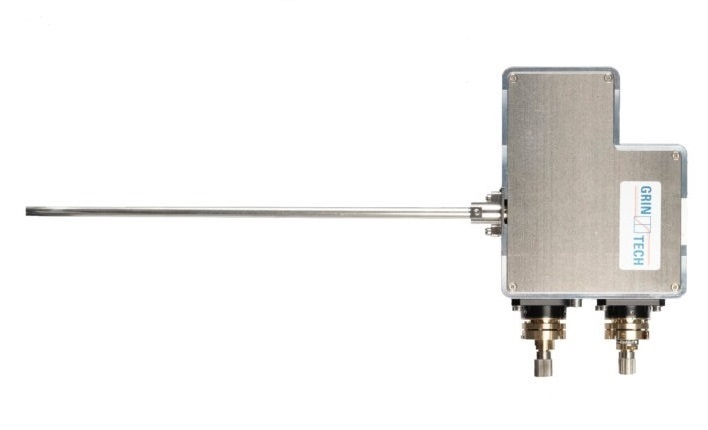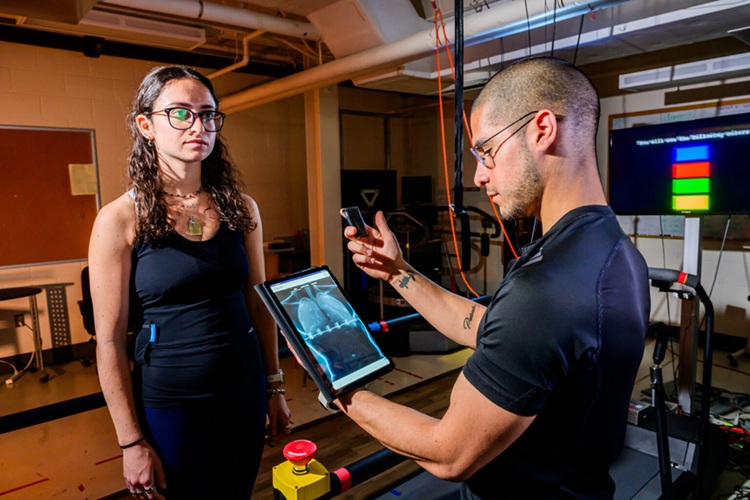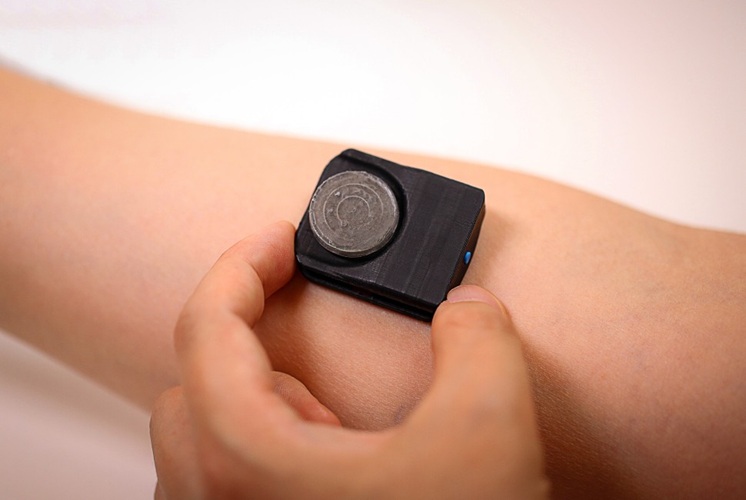Innovative Endoscope Precisely Identifies and Selectively Removes Tumor Tissue in Real Time
|
By HospiMedica International staff writers Posted on 10 Jan 2025 |

One of the most significant challenges in cancer surgery is completely removing a tumor without harming surrounding healthy tissue. Current techniques, such as intraoperative tissue sampling, only provide insight into the success of the surgery after the fact. To improve cancer treatment, more accurate diagnostic tools and precise surgical methods that preserve function are needed. This is particularly critical for cancers located near important functional structures, such as the brain or vocal folds in head and neck cancers. Now, an innovative endoscope could make cancer surgery safer by precisely identifying and selectively removing tumor tissue in real time during surgery. By integrating cutting-edge laser and imaging technologies with artificial intelligence (AI), this approach presents new opportunities for improving patients' recovery outcomes.
The endoscope, developed by an interdisciplinary research team that included researchers from the Leibniz Institute of Photonic Technology (Leibniz IPHT, Jena, Germany), is powered by light and AI and precisely detects tumor boundaries – without using of dyes. The technology combines various optical imaging methods in a multimodal imaging approach to analyze both the chemical and structural properties of tissue in real time, enabling precise identification of tumor borders. The system’s AI processes the data swiftly, providing surgeons with actionable information and allowing them to make informed decisions during the procedure.
What sets this technology apart is its dual functionality: it integrates both diagnostic and therapeutic capabilities into a single device. The endoscope features an embedded femtosecond laser that can precisely remove diseased tissue while preserving healthy tissue around it. This method has been successfully tested in preclinical studies using tissue samples from 15 patients. Research results published in Science Advances demonstrate that the technology achieved a 96% accuracy rate in identifying tumor tissue and removed it with an exceptional level of precision. Currently, the technology is in preclinical testing, with the next step being a clinical trial involving a larger group of patients. The researchers aim to make this light-based technique a standard tool in cancer surgery within the next few years. In the long term, this technology could also be adapted for use in other medical fields, such as dermatology and neurosurgery.
“The ‘see and treat’ principle is a significant advancement, as it makes surgery safer and improves patients’ chances of recovery,” said Prof. Dr. Orlando Guntinas-Lichius, co-author of the study. “For us as surgeons, this means that we can remove tumors more effectively while preserving healthy tissue. This could significantly reduce the need for follow-up surgery and reduce the burden on patients.”

Latest Surgical Techniques News
- Intravascular Imaging for Guiding Stent Implantation Ensures Safer Stenting Procedures
- World's First AI Surgical Guidance Platform Allows Surgeons to Measure Success in Real-Time
- AI-Generated Synthetic Scarred Hearts Aid Atrial Fibrillation Treatment
- New Class of Bioadhesives to Connect Human Tissues to Long-Term Medical Implants
- New Transcatheter Valve Found Safe and Effective for Treating Aortic Regurgitation
- Minimally Invasive Valve Repair Reduces Hospitalizations in Severe Tricuspid Regurgitation Patients
- Tiny Robotic Tools Powered by Magnetic Fields to Enable Minimally Invasive Brain Surgery
- Magnetic Tweezers Make Robotic Surgery Safer and More Precise
- AI-Powered Surgical Planning Tool Improves Pre-Op Planning
- Novel Sensing System Restores Missing Sense of Touch in Minimally Invasive Surgery
- Headset-Based AR Navigation System Improves EVD Placement
- Higher Electrode Density Improves Epilepsy Surgery by Pinpointing Where Seizures Begin
- Open-Source Tool Optimizes Placement of Visual Brain Implants
- Easy-To-Apply Gel Could Prevent Formation of Post-Surgical Abdominal Adhesions
- Groundbreaking Leadless Pacemaker to Prevent Invasive Surgeries for Children
- Spectroscopy Technique Improves Surgery for Pediatric Epilepsy Patients
Channels
Critical Care
view channel
Novel Intrabronchial Method Delivers Cell Therapies in Critically Ill Patients on External Lung Support
Until now, administering cell therapies to patients on extracorporeal membrane oxygenation (ECMO)—a life-support system typically used for severe lung failure—has been nearly impossible.... Read more
Generative AI Technology Detects Heart Disease Earlier Than Conventional Methods
Detecting heart dysfunction early using cost-effective and widely accessible tools like electrocardiograms (ECGs) and efficiently directing the right patients for more expensive imaging tests remains a... Read more
Wearable Technology Predicts Cardiovascular Risk by Continuously Monitoring Heart Rate Recovery
The heart's response to physical activity is a vital early indicator of changes in health, particularly in cardiovascular function and mortality. Extensive research has demonstrated a connection between... Read more
Wearable Health Monitoring Device Measures Gases Emitted from and Absorbed by Skin
The skin plays a vital role in protecting our body from external elements. A key component of this protective function is the skin barrier, which consists of tightly woven proteins and fats that help retain... Read morePatient Care
view channel
Portable Biosensor Platform to Reduce Hospital-Acquired Infections
Approximately 4 million patients in the European Union acquire healthcare-associated infections (HAIs) or nosocomial infections each year, with around 37,000 deaths directly resulting from these infections,... Read moreFirst-Of-Its-Kind Portable Germicidal Light Technology Disinfects High-Touch Clinical Surfaces in Seconds
Reducing healthcare-acquired infections (HAIs) remains a pressing issue within global healthcare systems. In the United States alone, 1.7 million patients contract HAIs annually, leading to approximately... Read more
Surgical Capacity Optimization Solution Helps Hospitals Boost OR Utilization
An innovative solution has the capability to transform surgical capacity utilization by targeting the root cause of surgical block time inefficiencies. Fujitsu Limited’s (Tokyo, Japan) Surgical Capacity... Read more
Game-Changing Innovation in Surgical Instrument Sterilization Significantly Improves OR Throughput
A groundbreaking innovation enables hospitals to significantly improve instrument processing time and throughput in operating rooms (ORs) and sterile processing departments. Turbett Surgical, Inc.... Read moreHealth IT
view channel
Printable Molecule-Selective Nanoparticles Enable Mass Production of Wearable Biosensors
The future of medicine is likely to focus on the personalization of healthcare—understanding exactly what an individual requires and delivering the appropriate combination of nutrients, metabolites, and... Read more
Smartwatches Could Detect Congestive Heart Failure
Diagnosing congestive heart failure (CHF) typically requires expensive and time-consuming imaging techniques like echocardiography, also known as cardiac ultrasound. Previously, detecting CHF by analyzing... Read moreBusiness
view channel
Expanded Collaboration to Transform OR Technology Through AI and Automation
The expansion of an existing collaboration between three leading companies aims to develop artificial intelligence (AI)-driven solutions for smart operating rooms with sophisticated monitoring and automation.... Read more














